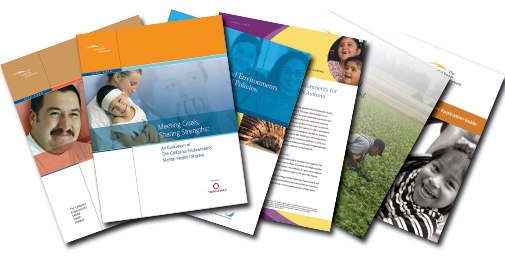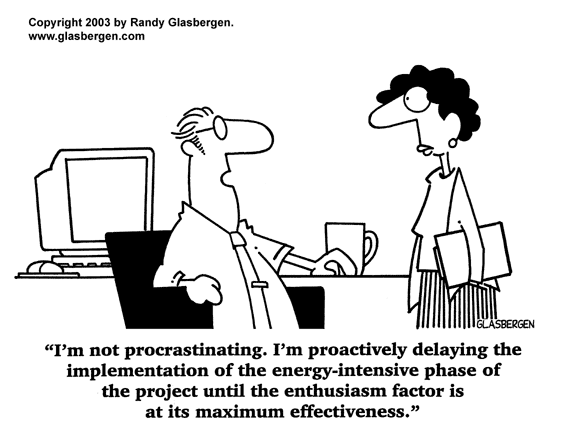| Week
1 Introduction |
Writing for the
Professions
Subject
No. 101058
|
This week's reading:
Petelin, R, & Durham, M. (2003). Writing in a Business Environment in The Professional Writing Guide: Writing well and knowing why Crows Nest: Allen & Unwin pp. 1-13
This week's question:
Summarise the points Petelin makes about the need for attention to clear writing in organisations? Is this relevant in the age of digital publishing and the internet?
|
Quick
Links:
Week 1 Lecture Slides
Week 1 Lecture Slides (in pdf note form)
Week 1 Lecture (audio) M4a
Practical
Exercise 1: Comparing two professional writing documents
Research
Exercise 2: Researching a professional 'discourse community'
Style Exercise: Eliminating Wordiness 1
This is the home page
for Writing for the Professions and will contain all the details of the
subject for the entire semester. We shall be using this
website inconjunction with vUWS in order to organise, manage and teach WFP
this semester. If you are away, then you can easily catch up by checking
out
the activities
for the day you miss. If you wish to access this site directly (rather than go through vUWS) type http://stc.uws.edu.au/wfp into your browser.
What
are the aims of the course?
One major aim of the
unit is to have you develop an understanding of theories and issues related
to professional writing research and practice and
to both investigate and discuss these in more detail. To this end, classes
each week will incorporate a reading which can be found in pdf form linked on the homepage of this site and also at the beginning of each week. All class members are expected
to have read the weekly reading before coming to class so that they can participate
meaningfully
in the class
discussion.
At the beginning of
most classes, an allocated pair of students will briefly outline and discuss
the reading and answer the set question. A well prepared presentation will go beyond the reading
and will incorporate other
sources
and ideas. This presentation will form the basis of a brief class discussion
about the topic. The presenters must also submit by the following week a 500 word summary of their presentation and response to the set question.
The second major aim
is to have students practice using different “genres” of
professional writing and to develop a more professional 'style' of
writing. To this end, you will be doing a series of weekly 'style' exercises
which teach you ways some of the main ways to improve the clarity
and sophistication of your writing. You will practice these via a set of
weekly exercises.
What
do I do with the weekly exercises?
Each week there will
be a number of exercises which relate both to the various theories and
issues (as discussed in the lectures and the weekly readings)
and to elements of professional writing style. You should use the time available
in your tutorial to work through these. You will probably have to complete
many of them at home but remember that the website is always here. See the
Learning Guide for the exact details of the minimum number of exercises
you must do and how to submit them.
You do not have
to complete every exercise in every week, but must complete a
minimum
number
and submit
them
as part of your Writing Portfolio Assignment (see the Learning Guide and/or
vUWS for specific details). We recommend that you keep multiple copies of
your work in case files get lost or corrupted. You can email your work
to yourself or use a USB stick.
CAUTIONARY NOTE: while the most popular way to save data these days is by using one of those nifty, tiny USB Flash drives, a portable HD is a much safer option. If you insist on using a USB drive for all your assignment work, get one that is mainly made of metal (not plastic) and one which has a long cord attached so you do not accidentally leave it plugged into a public computer. Cheap, no-name drives will not work very well, or may stop working just as you need the data. Do not work off USB drives, instead copy the data to your Desktop on to the Hard Disk, work off the Hard Disk, then copy it back the USB drive when you are ready to leave the computer. We know quite a few students who have had their drives made unreadable by just using them too much.
EXTRA NOTE: make sure that the computer you are using at home has excellent virus protection. The most important thing is that the database of viruses which your virus scanner uses, is updated online on a regular basis. Avast! or AVG are ones we know which works better than Nortons' and are free.
Practical
Exercise
1. What do professional writers do?
There is a school of thought
which thinks of Professional Writers as in fact professionals who communicate
through writing. That means
just
about all professionals, since all professional people write on a regular
basis. Lawyers, doctors, engineers, and programmers need to write,
basically
all the time. I regard myself as a professional writer even though I am not
called this job title.
In July of 1998 there
was a discussion, on the listserv of the Canadian Association for the Study
of Language and
Learning, aka "Inkshed," about
nature and definition of "professional writing." Please read the discusssion.
Moving on ...
But let's get back to
the more commonplace definitions. Professional writers probably do not
regard themselves as creative writers.
They do not make up stories, or poems or plays. Professional writers and
technical writers convey information, with the main intention of having others
understand that information. Professional/Technical Writing differs from
non-technical writing in the following ways:
-
technical/professional writing has clarity, accuracy,
conciseness, and readability;
-
technical/professional writing is put to some use, rather
than simply being enjoyed;
-
technical/professional writing is often
collaborative;
-
technical/professional writing is often produced within
organisations.
Your tutor will hand out
various publications. Pair up with another student in class and examine
two publications and try
to focus
in on the Clarity, Use, Collaboration and Organisation dimensions of various
magazines and periodicals. And think about Persuasion (which is missing
from
the above list). Are there any publications which typify all the features
above? Which ones do you like, and why? Which ones have the greatest common
appeal? Which ones employ persuasive techniques?
Answer the following
questions about your two publications. Keep some notes about your responses as we will ask people to discuss their answers in a class discussion:
- Who is the author?
Person/organisation? How is this reflected in the style or language or
layout of the publication?
- Who
is the intended audience? How is this reflected in the content, language,
layout, design of the publication? Give an example.
- What is the intended
purpose of this publication? Information, entertainment, persuasion,
a combination of these? Give a couple of examples.
- Describe the main
characteristics? Style, layout, language, type of content: do these match
the list above?
- How does the publication
reflect the style or 'culture' of the organisation which has published it?
Look at the style of language, colours, layout etc or any other characteristics.
- What image does each organisation wish to project via both their writing style and their design choices. How do you know?
- Compare these with
the second publication you are examining. Which is more likely to be
successful for its purpose and why?
Back to the top
What
is
a professional writing 'discourse community'?
Most people, on any
given day, move between and within several 'communities'. They encounter
their families, their neighborhood, their friends, their immediate
colleagues, practitioners of their profession both local and national,
people who share recreational or entertainment interests, and people who
share their
geographic area. In each community, there are conventions about what can
be talked about, what gets assumed, and how one can talk about different
things. These conventions shape a 'discourse community'.
The term was first used
by sociolinguist Martin Nystrand in 1982 and further developed by American
linguist John Swales* in 1990. He presents six
defining characteristics of a discourse community. It:
- has a broadly
agreed set of common public goals
- has mechanisms of
intercommunication among its members.
- uses its participatory
mechanisms primarily to provide information and feedback.
- utilizes and hence
possesses one or more genres in the communicative furtherance
of its aims
- in addition to owning
genres, it has acquired some specific lexis.
- has a threshold level
of members with a suitable degree of relevant content and discoursal
expertise.
James Porter (1992)
further defined the discourse community as: “a
local and temporary constraining system, defined by a body of texts
(or more generally, practices)
that are unified by a common focus. A discourse community is a textual system
with stated and unstated conventions, a vital history, mechanisms for wielding
power, institutional hierarchies, vested interests, and so on.” From
the above exercise you might notice that some of the publications differ
in the kind
of language they use, what is appropriate/acceptable to write
about and so on. Many of these differences are subtle but these subtleties
may mean the difference between engaging or not engaging with the audience
of the piece of writing. The diagram below illustrates some of the many discourse communities of which people may be members.
While this concept may be somewhat out of favour, it is still
useful. Swales (1990) defines “discourse community” a group
of people who attempt to reach a "broadly agreed set" of goals
by the use of a common terminology in speaking or writing. This
idea is relevant to us as we must realise that each profession will have
its own rules, expectations, style
and assumptions upon which the writing is founded. Here's
a reading which overviews Swales' argument or notion.
Research
Exercise 2: Researching a professional discourse
community (this exercise will have to be done later but is a good one
for your portfolio).
Research the profession that you wish to join by interviewing
someone currently in the profession about the
kinds of writing
he
or she does
on
the job. Write a few paragraphs which describe
the characteristics of the discourse community is at work in this profession. You
might ask the following questions:
• What are the
writing conventions of this profession?
• What are the basic assumptions that ground the profession?
• What makes someone an authority in this profession?
• What kinds of things are important for communicating in this profession?
Analyze at least two professional documents from
this discourse community. What are some of the defining characteristics?
How
are they unique to this profession? Think about both internal and external
types of documents not just the obvious ones.
* Swales, J. (1990) Genre Analysis: English
in Academic and Research Settings. Cambridge: Cambridge UP
Back to the top
OK, let's do some writing … introduction
to the weekly style exercises
Before you start, download
Allan Charlton's (2010) Style
for Students. There is a pdf copy also on the vUWS homepage. Allan has been a technical writer and one of our long serving
tutors. He has written this especially for this unit. 
Why should I do these exercises?
Learning
the principles of professional writing style is like learning to drive
a car or play a musical instrument: a teacher talking about it only helps
to a certain extent – you only improve with lots of practice and
with constant feedback. Unfortunately, while many students think they are
good writers, they often create longwinded, wordy prose and seem to have
an aversion to the process of revising and editing their work. Even the
best writers never get it right the first time around and need to spend
time improving their prose.
Many
of us have also learned our style either from what we have read, or from
the conventions of the organisations or the professions in which we have
worked. This is a problem especially when many students don't read traditional
texts often (as opposed to online texts which have different style conventions),
or have worked in organisations which have a preference for longwinded,
wordy styles – especially law and government. Often it is hard to
throw off the ingrained practices we have come to rely on.
Some useful references. Our
mission in Writing for the Professions is to not only teach you
some of the principles of plain English and good style, but to have you
understand why these help your readers understand your writing much more
easily and quickly. To do this, we will spend the last part of each tutorial
looking at a particular principle of style. Many of these are based on
the following references (all listed in detail in your Learning Guide):
Style Exercises: what do I have to do?
Each
week your tutor will go through a particular principle and ask you to
do some exercises which
you can find at the bottom of the weekly web page. Download
the Word file, complete the exercises
(you must do the entire set).
In each set there will be a corresponding set of suggested answers to the first few questions. You'll be able to check your answers these but don't cheat as this defeats the purpose.
You can then go on and complete the remaining questions on your own. You submit these as part of your exercise portfolio at the end of the semester.
Warm up ...
How many of these can you find?
Principle
1: Eliminating Wordiness (we'll continue with this one next week)
Our
first principle is "Eliminating Wordiness". Wordy and longwinded
expressions can make it hard for your readers to understand your writing
quickly and easily. Often, for reasons of convenience or habit, we use
expressions which are cliched, longwinded and are often tautologies. However,
many writers still feel that if they use simple words and expressions,
they don’t sound educated. This may because they are used to reading
longwinded, wordy prose themselves and think this is how all professional
writing should sound. Not so! Read this recent
newspaper article on how Australian hate cliches.
Look
at this example.
We
hereby wish to let you know that our company is pleased with the confidence
you have reposed in us.
What's
wrong with …
We
appreciate your support, thank you.
For
more detail, first check out our first Flash tutorial titled
Style
1: Eliminating Wordiness.
To begin to improve,
we firstly need to be aware of how our writing can become wordy due to
some bad habits. How might we make some of these common phrases more concise
without changing the meaning? Cut and paste the following table into a
Word document and then have a go at simplifying the expressions. Discuss
the
answers
in class. In some cases, there is more than one correct answer. Often if
will depend on the context.
Longwinded
|
Replace
with
|
Tautology
|
Replace
with
|
at
your disposal
|
for
your use
|
reverse
backward
|
reverse
|
upon
receipt of
|
when
we receive
|
precedes
before
|
before
|
completely
filled
|
|
progress
forward
|
|
at
this point in time
|
|
I
personally
|
|
due
to the fact that
|
|
brief
moment
|
|
in
the event of
|
|
estimated at about
|
|
at
a later date
|
|
repeat
again
|
|
jumped
off of
|
|
around
in circles
|
|
on
a daily basis
|
|
true
facts
|
|
owing
to the fact that
|
|
in
point of fact
|
|
clenched
tightly
|
|
written
down
|
|
close
proximity
|
|
period
of time
|
|
combine
together
|
|
advance
planning
|
|
in
an intelligent manner
|
|
red
in colour
|
|
repeat
again
|
|
visible
to the eye
|
|
recur
again
|
|
specific
example
|
|
close
scrutiny
|
|
actual
fact
|
|
came
at a time when
|
|
12
midnight
|
|
make
an attempt
|
|
exactly
the same
|
|
You can check out the
suggested
answers here.
We will start our style
exercises properly next week. This is only a warm up.
Back to the top





